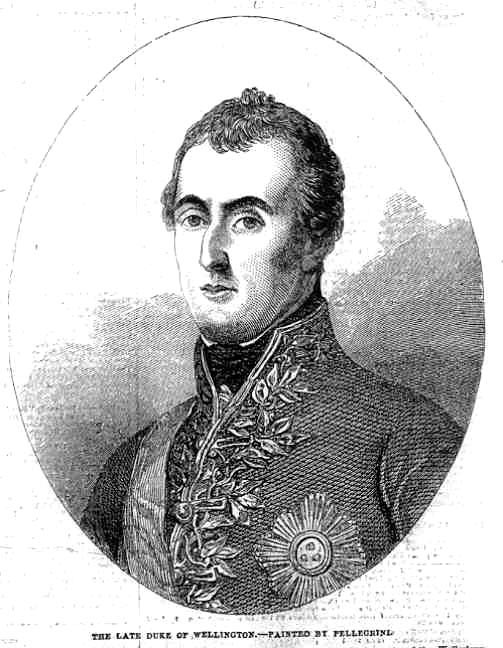


Three paintings of the Duke reproduced in The Illustrated News (1852) — left to right: Portraits by Pelligrini, Sir Thomas Lawrence, and Sir George Hayter. [Clock on thumbnails for larger images.]
In his review of the second volume of Percy Muir's biography of Arthur Wellesley, the first Duke of Wellington and one of England's greatest military leaders who twice served as Prime Minister, Henrik Bering summarizes the Iron Duke’s politics: “Wellington was a Tory: The French Revolution and his own experience, says Mr. Muir, had made him averse to cant about “the march of the intellect” and to' overoptimistic notions about an enlightened public. This skepticism meant that he found himself opposed to some of the key causes of his times, including Catholic emancipation; the Reform Act, which vastly expanded the franchise; and the 1846 repeal of the protectionist Corn Laws. But his pragmatism made him change his position on both Catholic emancipation and the Corn Laws. With the former, observes Mr. Muir, Wellington believed it was better for his government to make the necessary concessions from a position of strength than to leave the issue to the Whigs, who were perceived as too accommodating to Catholic demands. On the Corn Laws, as leader of the House of Lords, he merely pointed out that it would be risky for the upper house to be seen as going against the will of the House of Commons on such a key.”
Related Materials
- Wellington’s Speech on Catholic Emancipation (April 2, 1829)
- Wellington — a brief biography
- Wellington at Waterloo
- “Don't be a d––d fool, sir”
- George Canning’s Response to the King's Speech in the House of Lords (2 November 1830)
- Sir Robert Peel on the repeal of the Corn Laws (28 May 1846)
- John Ruskin's Skeptical Appraisal of Wellington
Bibiography
Bering, Henrik. “The Road from Waterloo.” Wall Street Journal (25-26 July 2015): c6.
Muir, Percy. Wellington: The Path or Victory. New Haven: Yale University Press, 2013.
Muir, Percy. Wellington: Waterloo and the Fortunes of Peace. New Haven: Yale University Press, 2015.
Last modified 26 September 2015